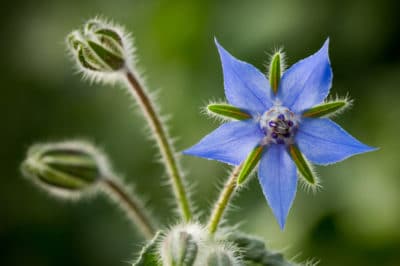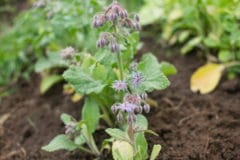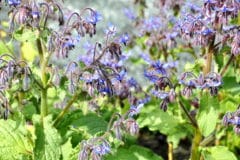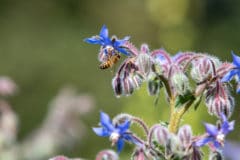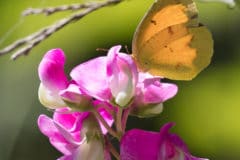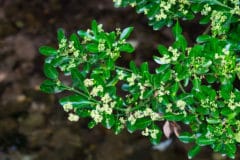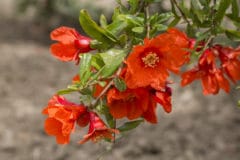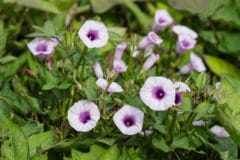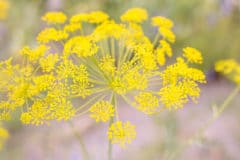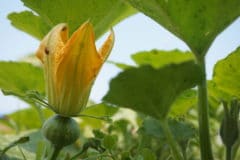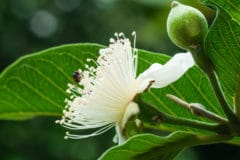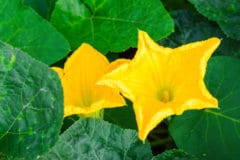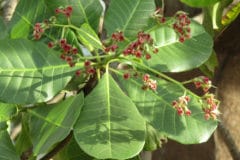Borage Flower Botany
Borage is an annual herb that originated in Syria. It has naturalized throughout North America, the Mediterranean, and Europe. Considered a weed by some and a beautiful ornamental by others, it is at least a practical addition to the garden.
It grows to an approximate height of 18-36 inches and can flop over as the flower heads become heavy. A full sun location and regular deadheading will help keep a plant upright. Flowers bloom from late spring through the summer. They are harvested while in full bloom before the fuzz-like hairs take on a prickly feel.
Borage Flower in the Garden
Those prickly hairs are also a reason that borage is so hardy in the garden. No pest dare to get close to those spines. If some of the flowers are left to go to seed, it will readily reseed itself and pop up again next year. It is easy to pull out and will not become invasive.
Often called ‘starflower’ for its’ bright periwinkle blue star-shaped flowers, borage is a top pollinator attractant. Bees of all kinds flock to borage flowers, which makes it an excellent companion to certain vegetables in the garden, namely strawberries and tomatoes. Borage honey has a distinct earthy smell and contains many of the plant’s medicinal benefits.
Borage Flower in the Kitchen
All parts of the borage plant are edible. Historically the flowers have been added to wines and spirits to keep sadness away. They can be frozen into decorative and herbal ice cubes and then later added to beverages.
Borage is made into preserves and added to sauces. It is a key ingredient in Frankfurt, Germany’s classic green sauce served cold often over eggs. The leaves and flowers make tasty additions to salads. The flowers are both decorative and have a pleasant cucumber flavor.
Borage Flower in the Medicine Cabinet
Herbalists consider borage to be:
- diuretic – aids in kidney function
- demulcent – sooths sore throats
- emollient – moisturizing and soothing
- Restorative – helps combat exhaustion
Borage has been credited as a medicinal herb since ancient Greece, Pliny the Elder claimed that it helps depression and creates merriment. Today it is most well-known for containing rich omega-6 oils. It is grown commercially as a source of gamma-linolenic acid which is used to help alleviate symptoms of arthritis and similar conditions.
